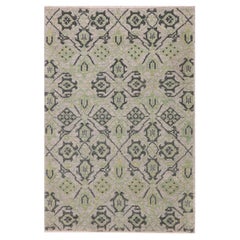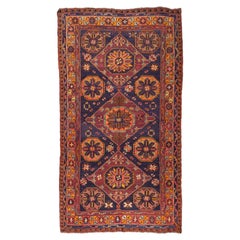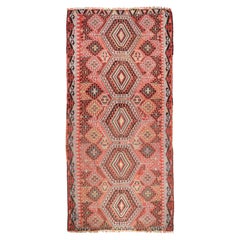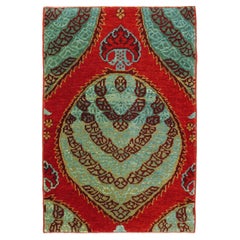West Asian Rugs
21st Century and Contemporary Revival West Asian Rugs
Wool, Organic Material, Natural Fiber
21st Century and Contemporary Oushak West Asian Rugs
Wool, Organic Material, Natural Fiber
21st Century and Contemporary Revival West Asian Rugs
Wool, Natural Fiber, Organic Material
Mid-20th Century Kilim West Asian Rugs
Wool, Natural Fiber
Mid-20th Century Kilim West Asian Rugs
Wool, Natural Fiber
21st Century and Contemporary Revival West Asian Rugs
Wool, Natural Fiber, Organic Material
Mid-20th Century Kilim West Asian Rugs
Wool, Natural Fiber
21st Century and Contemporary Revival West Asian Rugs
Wool, Natural Fiber, Organic Material
21st Century and Contemporary Revival West Asian Rugs
Wool, Natural Fiber, Organic Material
2010s Revival West Asian Rugs
Wool, Natural Fiber, Organic Material
2010s Revival West Asian Rugs
Wool, Natural Fiber, Organic Material
21st Century and Contemporary Revival West Asian Rugs
Wool, Natural Fiber, Organic Material
21st Century and Contemporary Revival West Asian Rugs
Wool, Natural Fiber, Organic Material
21st Century and Contemporary Revival West Asian Rugs
Wool, Natural Fiber, Organic Material
2010s Post-Modern West Asian Rugs
Wool, Felt
Mid-20th Century Kilim West Asian Rugs
Wool, Natural Fiber
21st Century and Contemporary Revival West Asian Rugs
Wool, Natural Fiber, Organic Material
Mid-20th Century Kilim West Asian Rugs
Wool, Natural Fiber
Mid-20th Century Kilim West Asian Rugs
Wool, Natural Fiber
21st Century and Contemporary Revival West Asian Rugs
Wool, Natural Fiber, Organic Material
21st Century and Contemporary Revival West Asian Rugs
Natural Fiber, Organic Material, Wool
21st Century and Contemporary Revival West Asian Rugs
Wool, Natural Fiber, Organic Material
21st Century and Contemporary Revival West Asian Rugs
Wool, Natural Fiber, Organic Material
21st Century and Contemporary Oushak West Asian Rugs
Wool, Natural Fiber, Organic Material
Mid-20th Century Kilim West Asian Rugs
Wool, Natural Fiber, Organic Material
2010s Post-Modern West Asian Rugs
Wool, Felt
Early 20th Century Oushak West Asian Rugs
Wool, Natural Fiber, Organic Material
Early 20th Century Oushak West Asian Rugs
Wool, Natural Fiber, Organic Material
Early 20th Century Sultanabad West Asian Rugs
Wool
Early 20th Century Oushak West Asian Rugs
Wool, Natural Fiber
Late 20th Century Kilim West Asian Rugs
Wool, Natural Fiber
Early 20th Century Kilim West Asian Rugs
Wool, Natural Fiber
2010s Post-Modern West Asian Rugs
Wool, Felt
Early 20th Century Kilim West Asian Rugs
Wool, Natural Fiber
Late 20th Century Kilim West Asian Rugs
Wool, Natural Fiber
2010s Post-Modern West Asian Rugs
Wool, Felt
2010s Post-Modern West Asian Rugs
Wool, Felt
Early 20th Century Oushak West Asian Rugs
Wool, Natural Fiber
Late 19th Century Kilim Antique West Asian Rugs
Wool, Natural Fiber, Organic Material
Late 19th Century Serapi Antique West Asian Rugs
Wool
Early 20th Century Oushak West Asian Rugs
Wool, Natural Fiber
Early 20th Century Kilim West Asian Rugs
Wool, Natural Fiber
21st Century and Contemporary Revival West Asian Rugs
Wool, Natural Fiber, Organic Material
21st Century and Contemporary Oushak West Asian Rugs
Wool, Organic Material, Natural Fiber
Late 19th Century Kilim Antique West Asian Rugs
Wool, Natural Fiber, Organic Material
20th Century Folk Art West Asian Rugs
Wool
Early 20th Century West Asian Rugs
Wool, Cotton
Mid-20th Century Kilim West Asian Rugs
Wool, Natural Fiber
Early 20th Century Kilim West Asian Rugs
Wool, Natural Fiber, Organic Material
21st Century and Contemporary Revival West Asian Rugs
Wool, Natural Fiber, Organic Material
Late 19th Century Kilim Antique West Asian Rugs
Wool, Natural Fiber, Organic Material
Early 20th Century Kilim West Asian Rugs
Wool, Natural Fiber
Early 20th Century Kilim West Asian Rugs
Wool, Natural Fiber
Early 19th Century Kilim Antique West Asian Rugs
Wool, Natural Fiber
Mid-20th Century Kilim West Asian Rugs
Wool, Natural Fiber
21st Century and Contemporary Revival West Asian Rugs
Wool, Natural Fiber, Organic Material
Early 20th Century Kilim West Asian Rugs
Wool, Natural Fiber
Mid-20th Century Kilim West Asian Rugs
Wool, Natural Fiber, Cotton




